


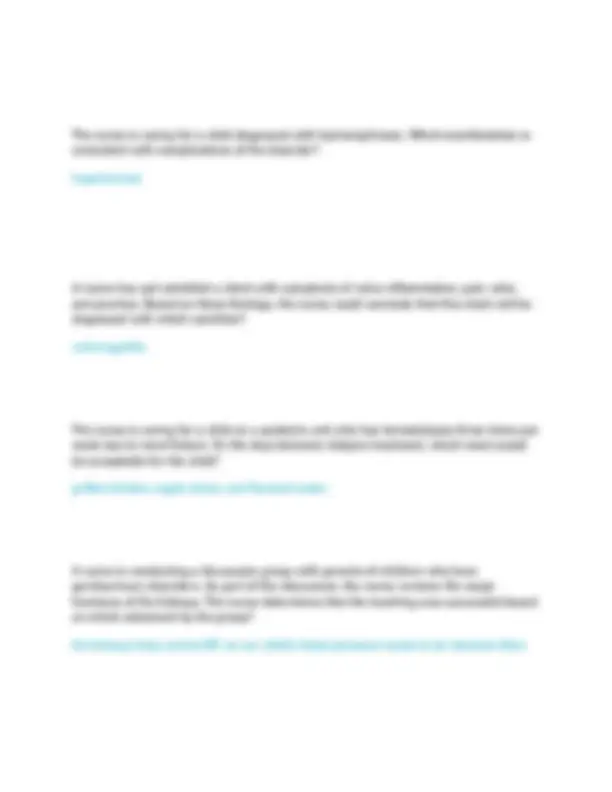



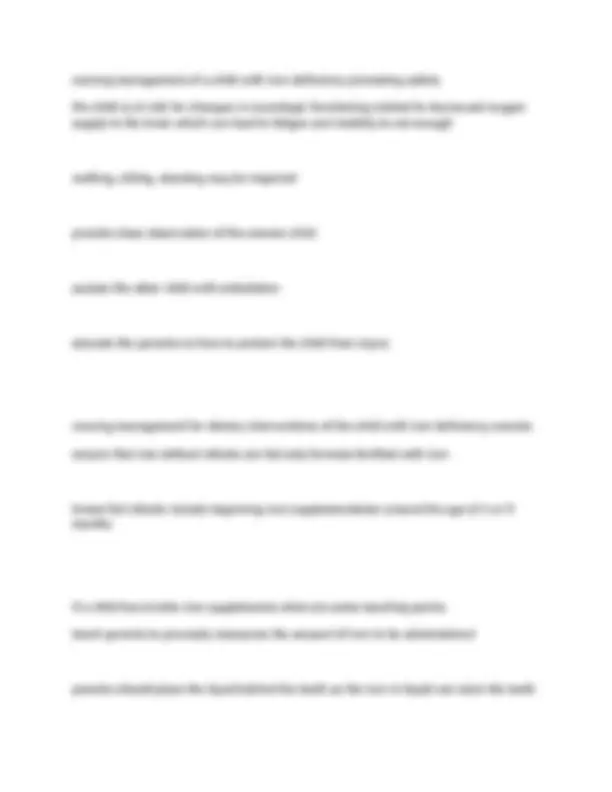

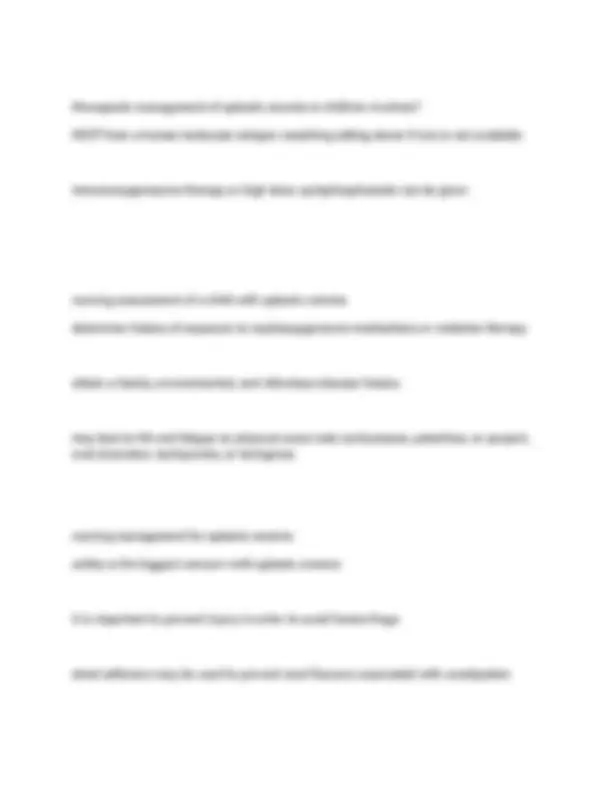
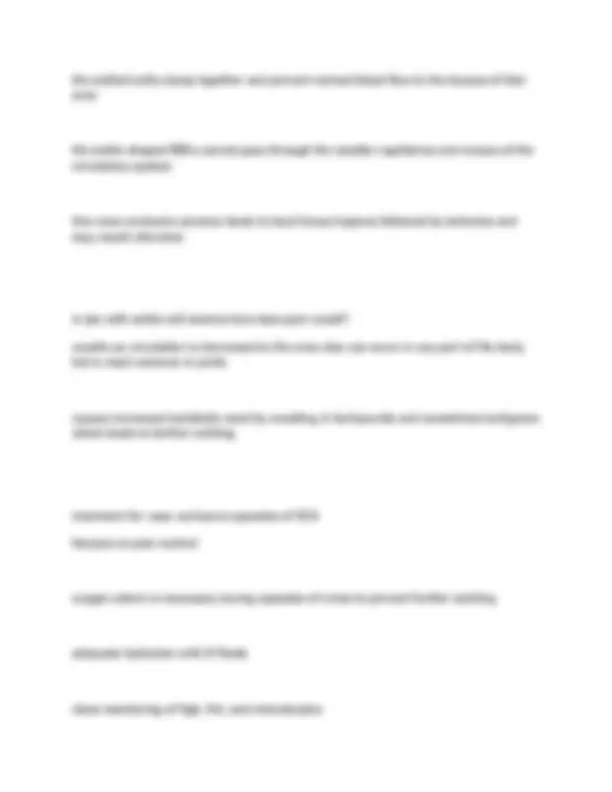
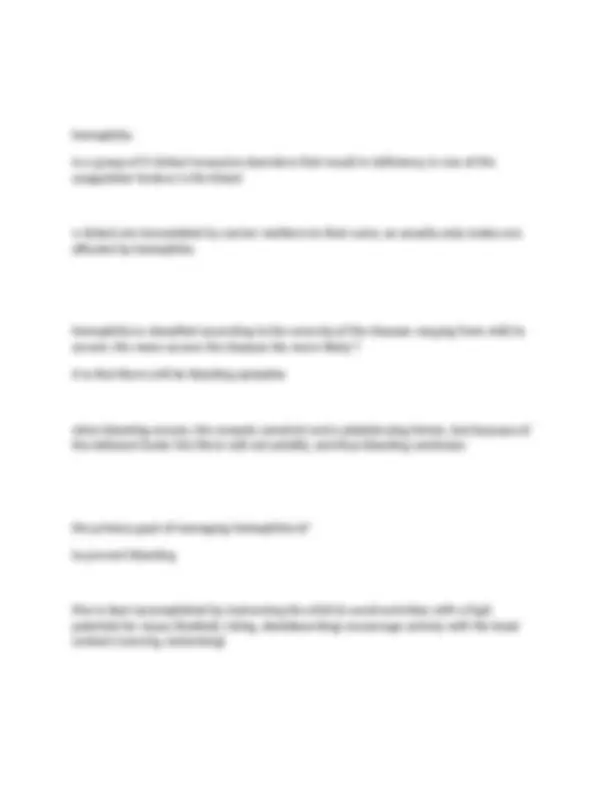
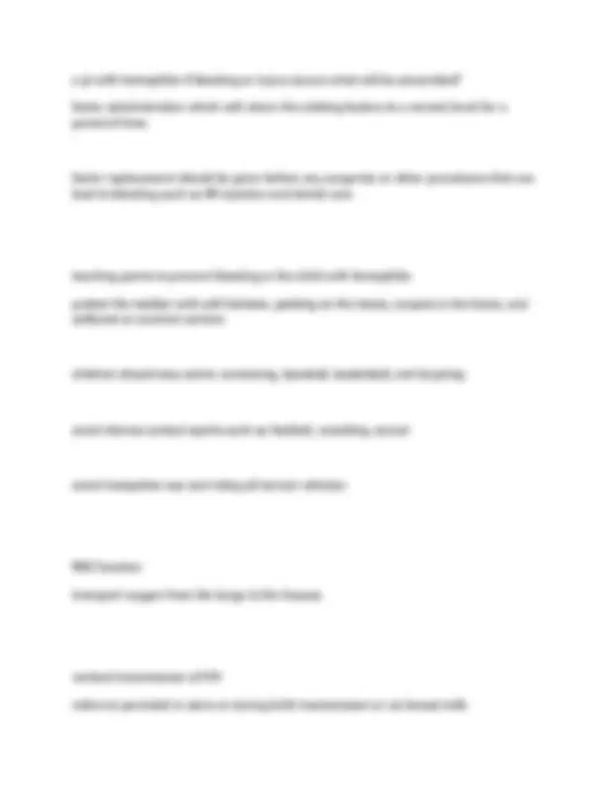

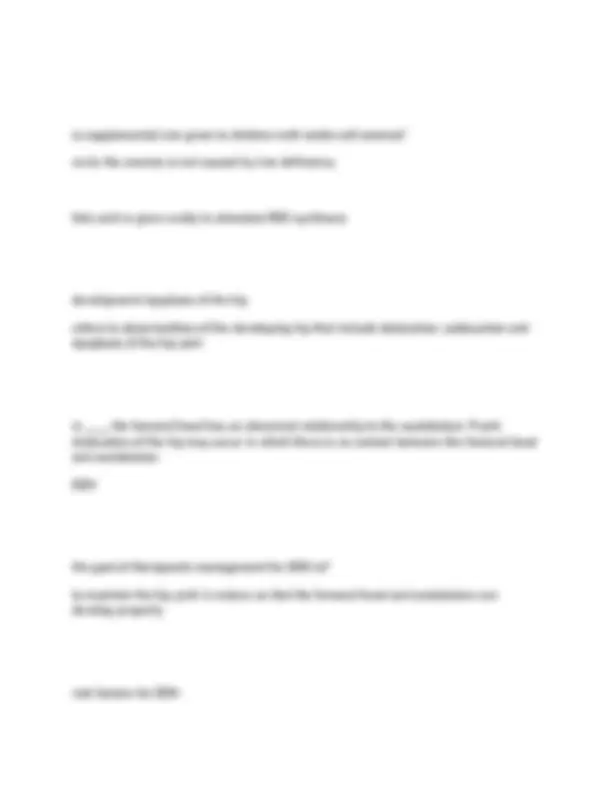

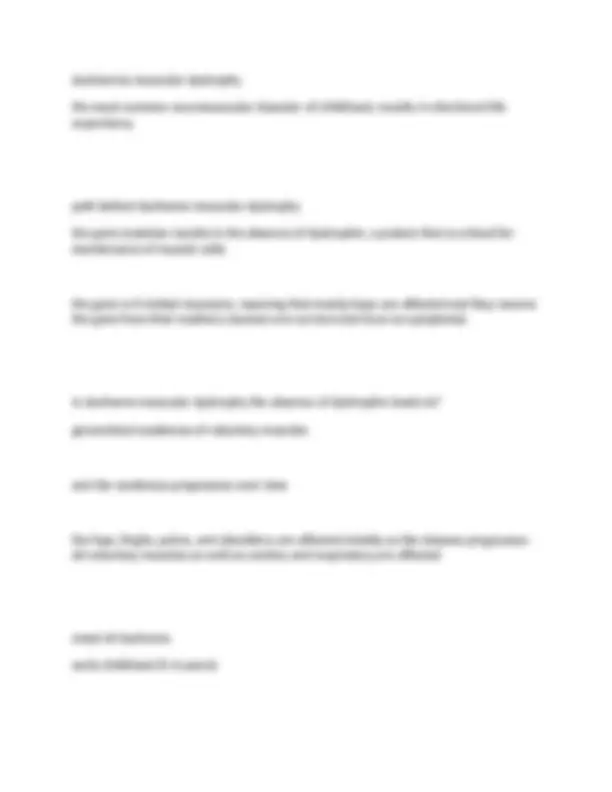

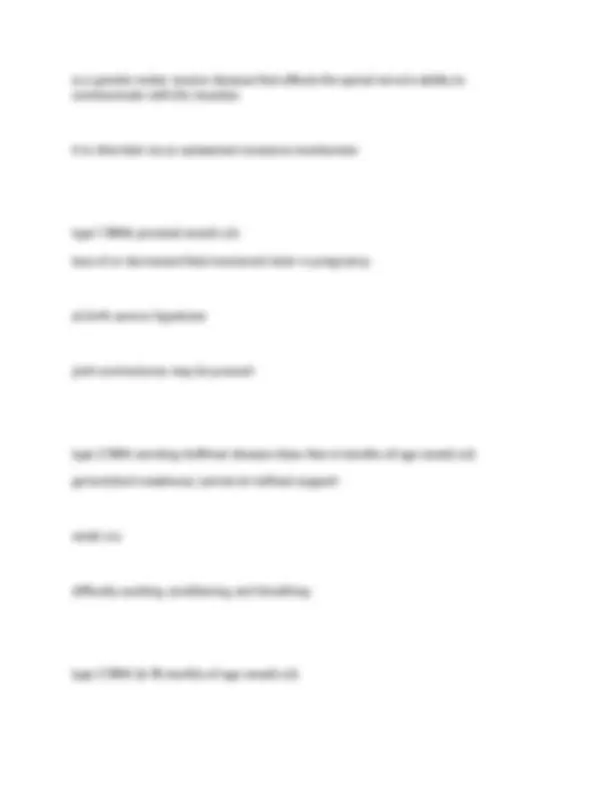

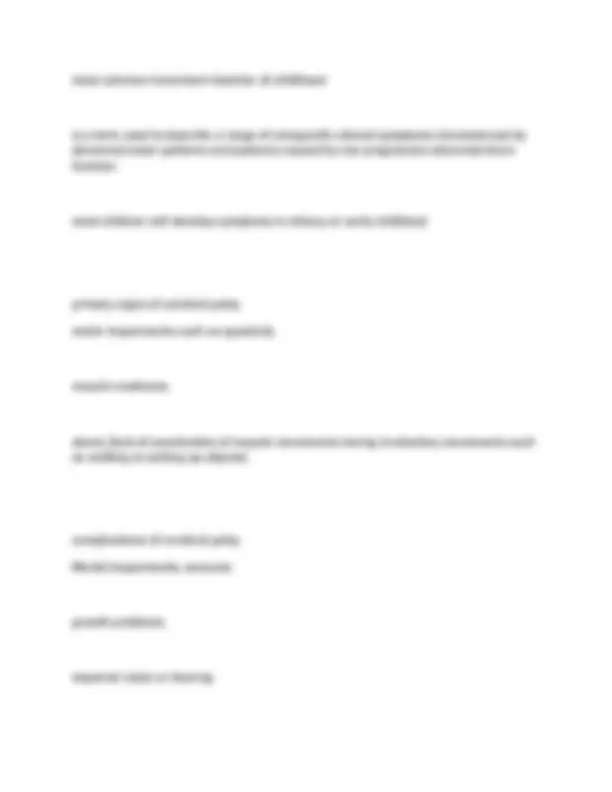
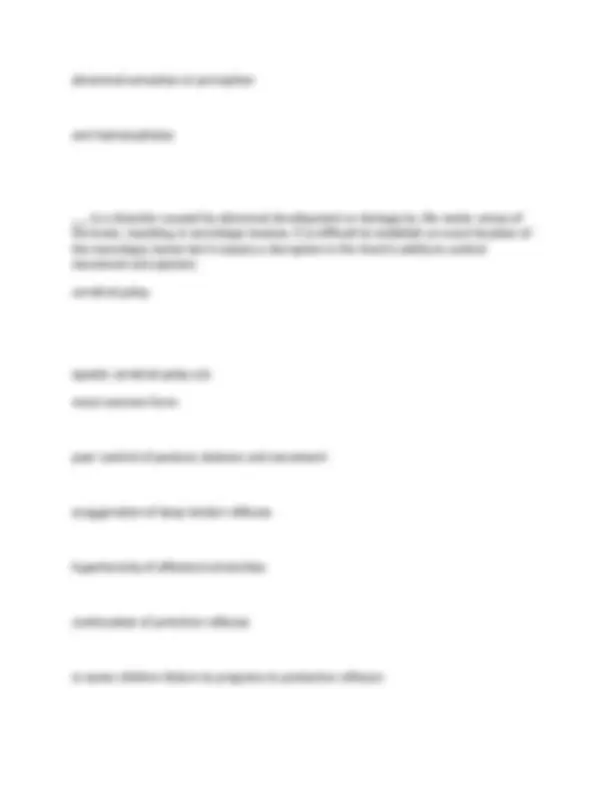

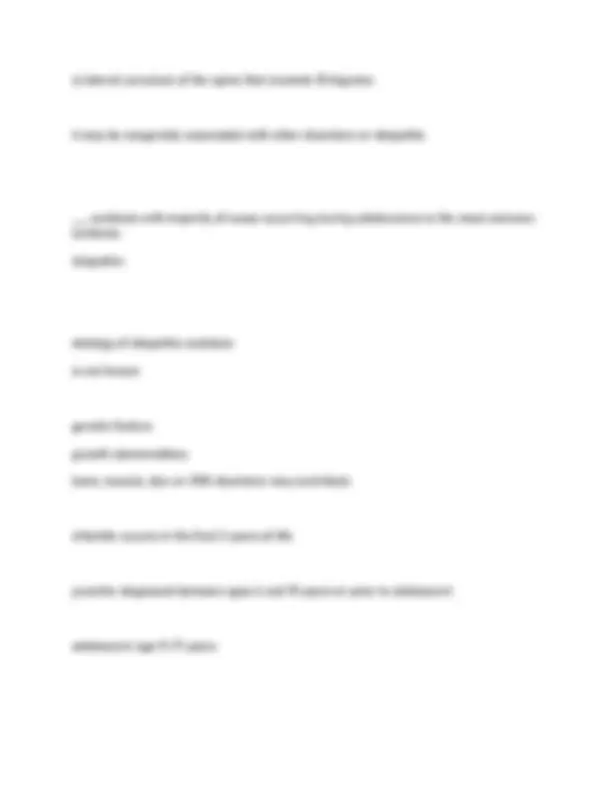
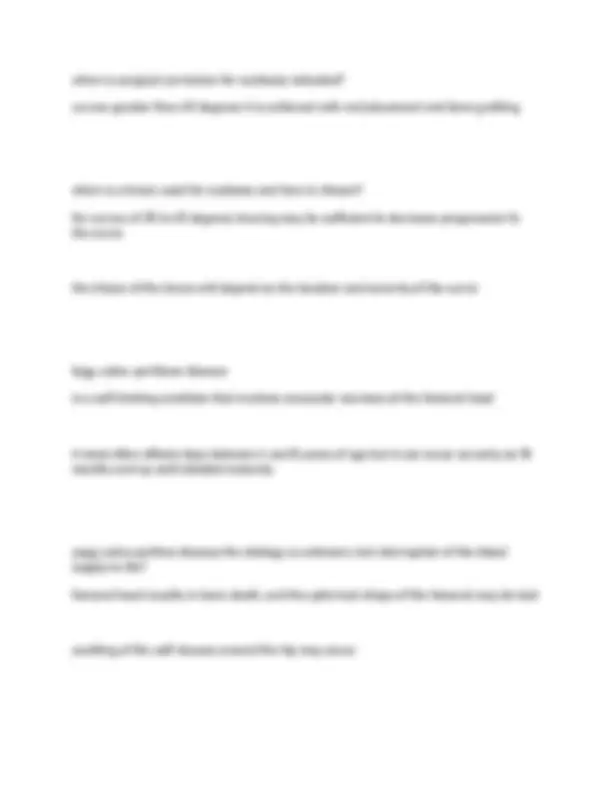
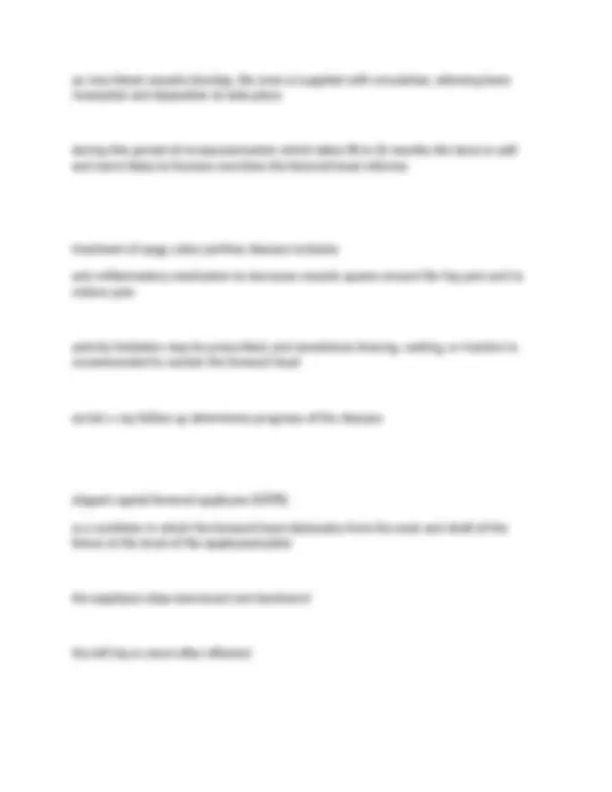



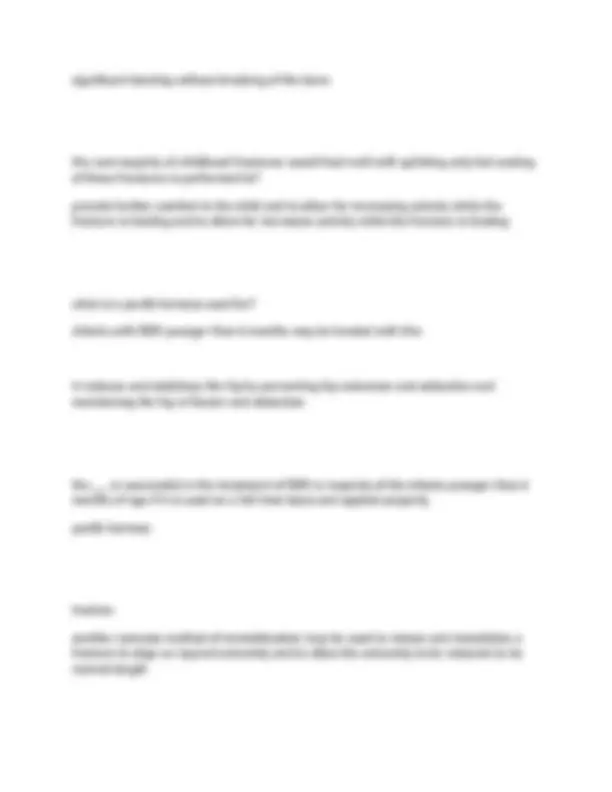

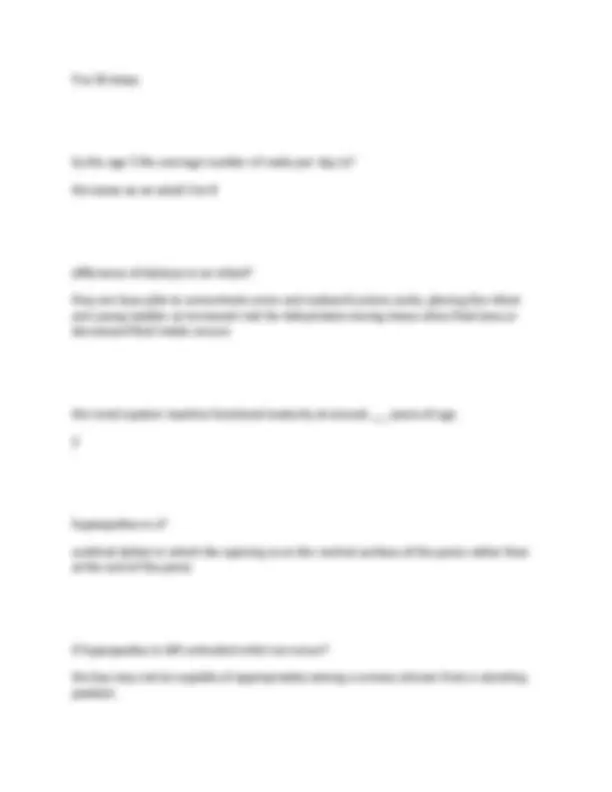
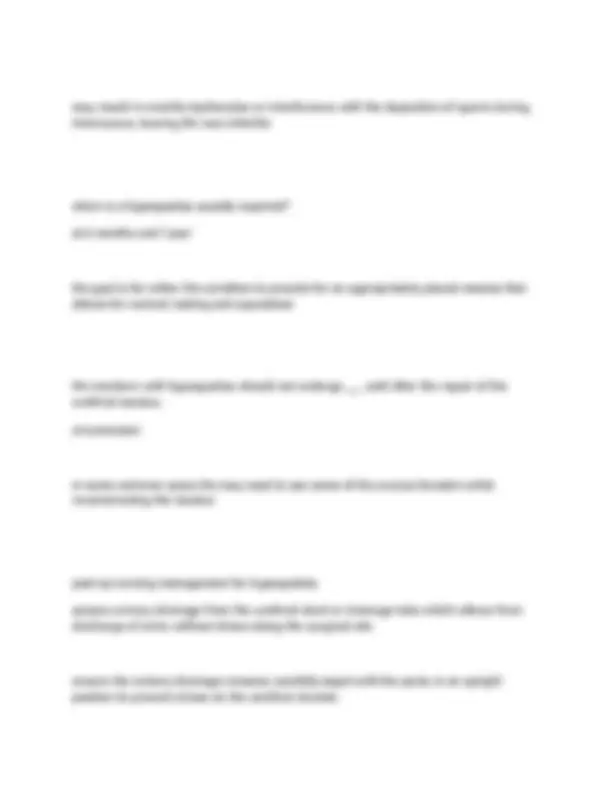
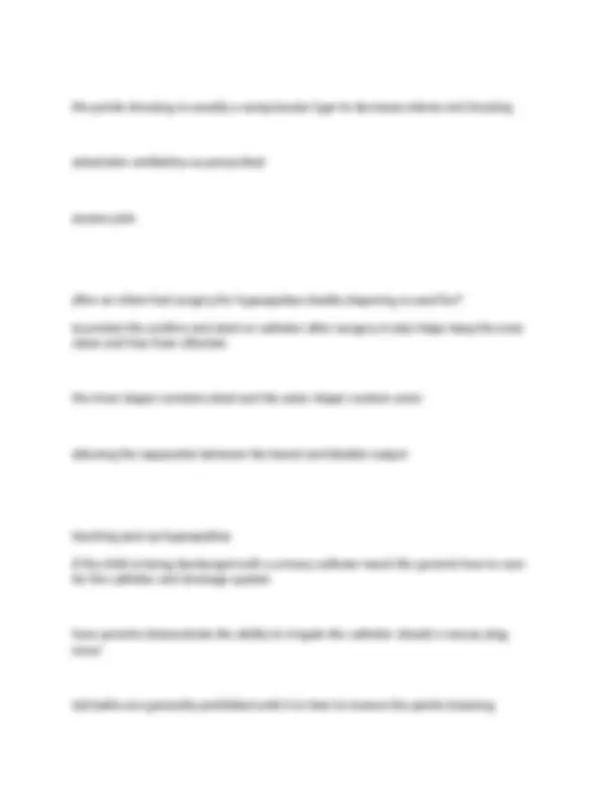
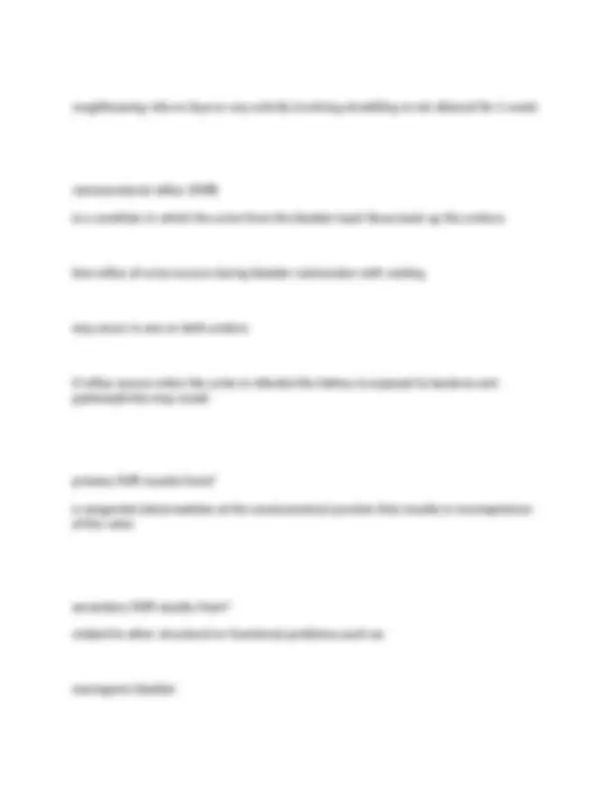
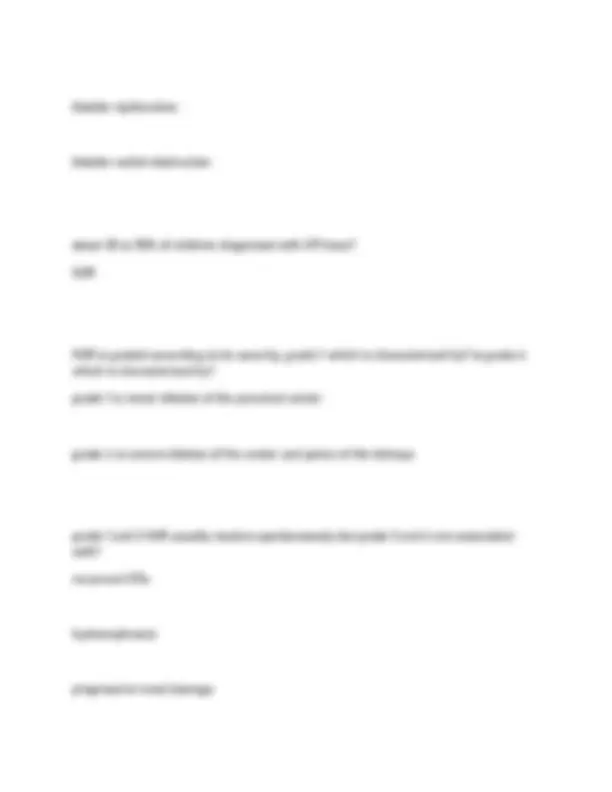
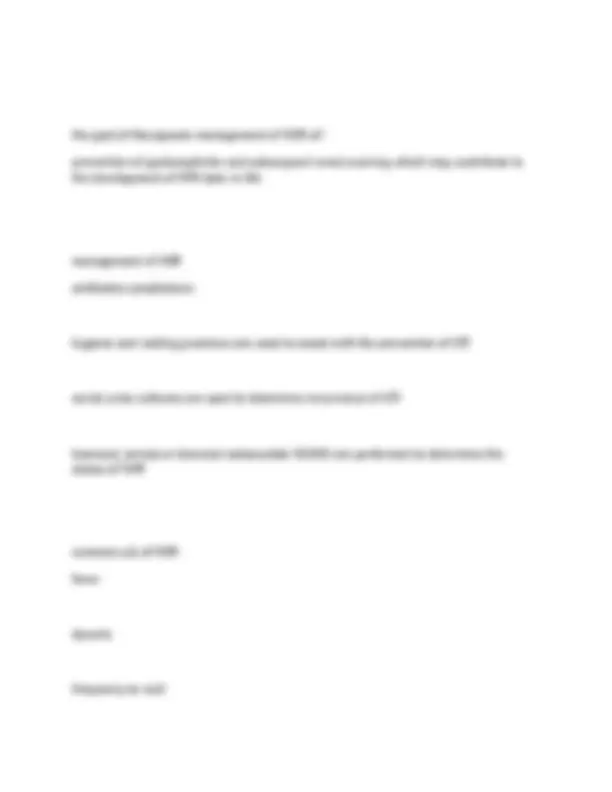
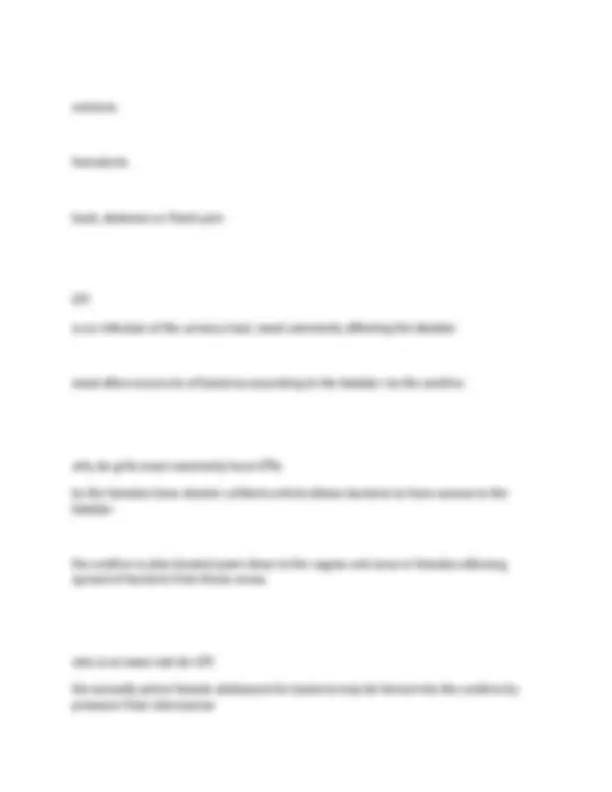

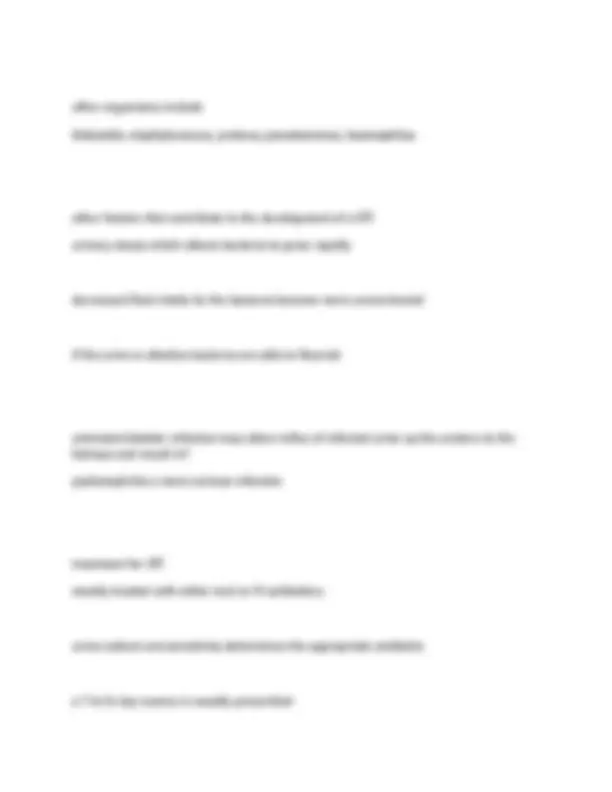
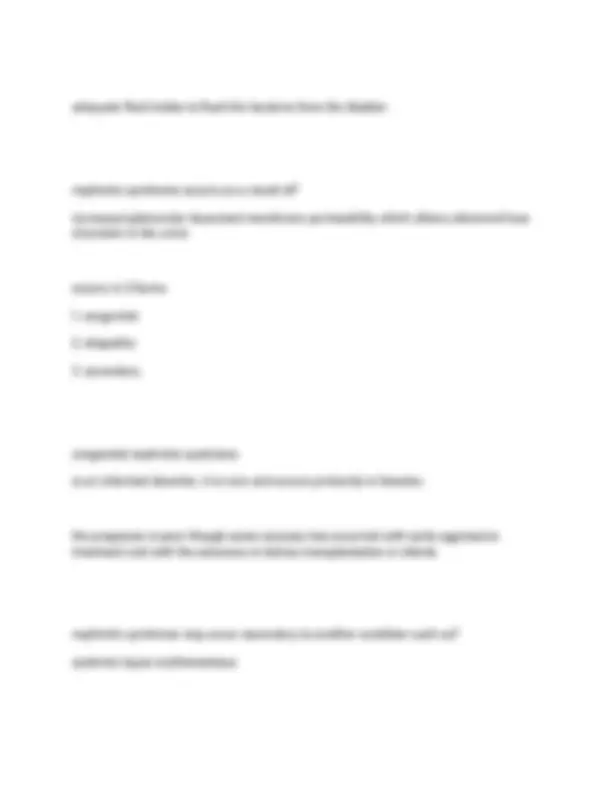

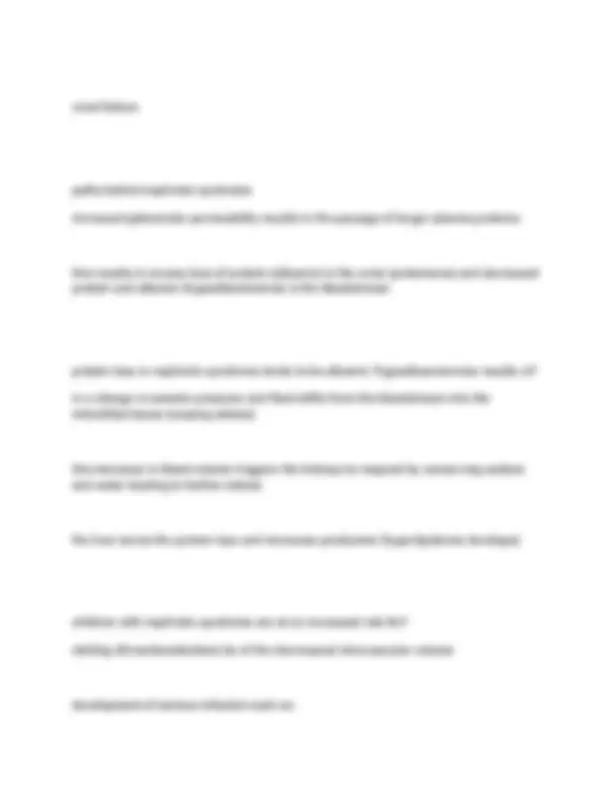

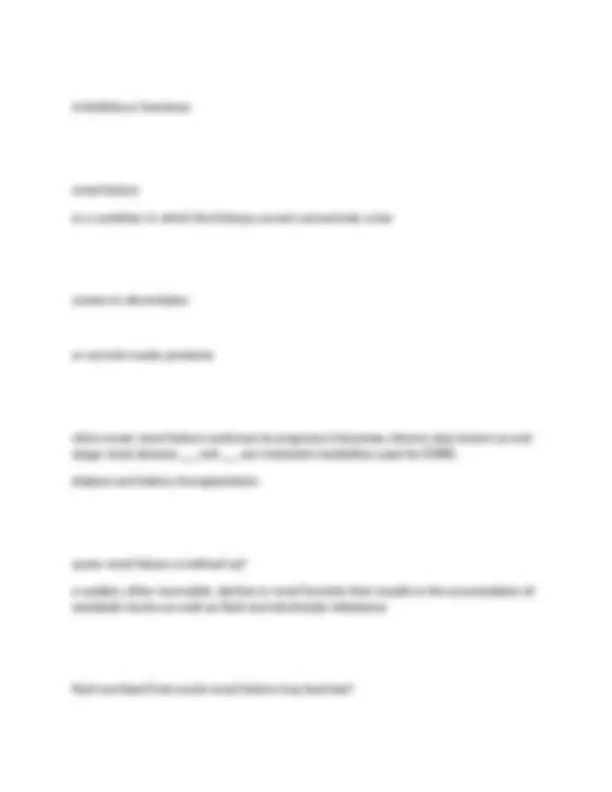

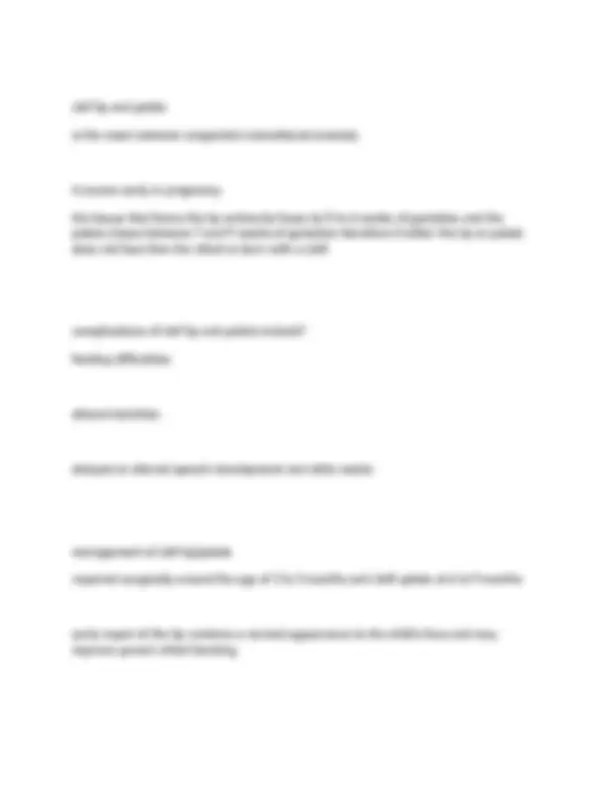

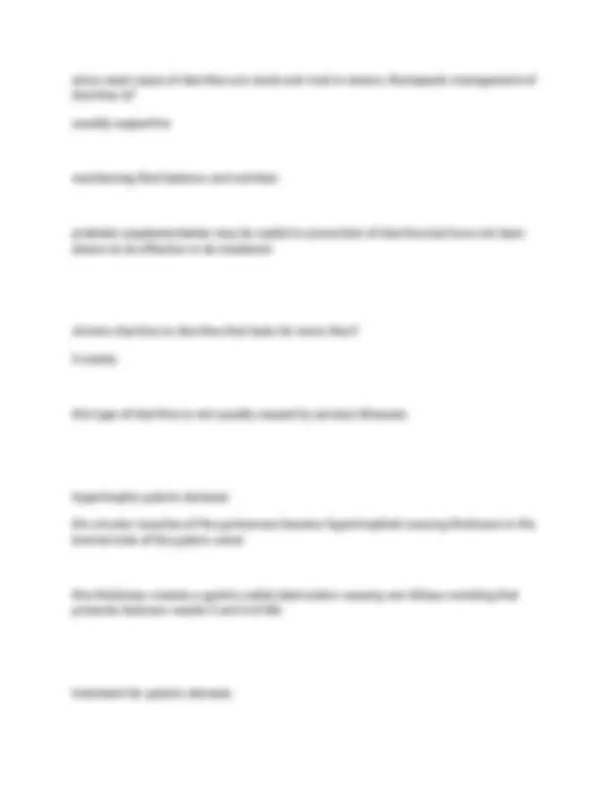
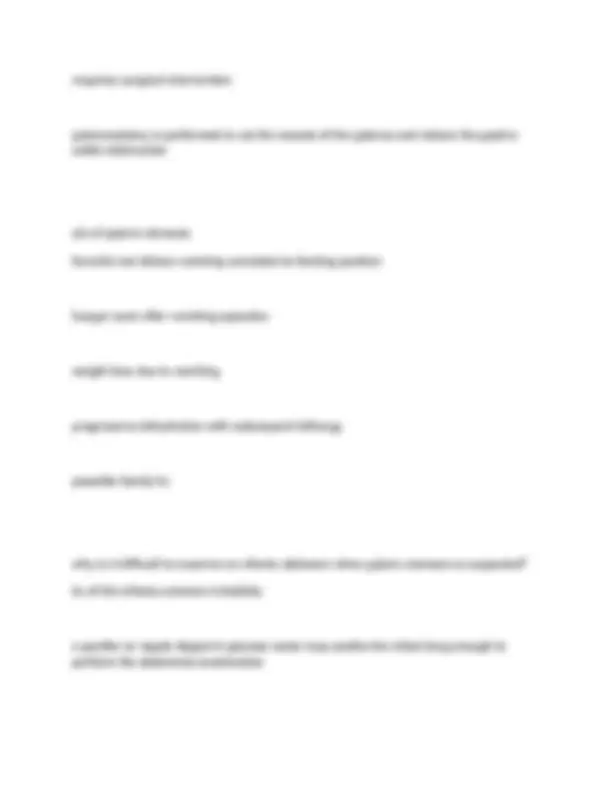
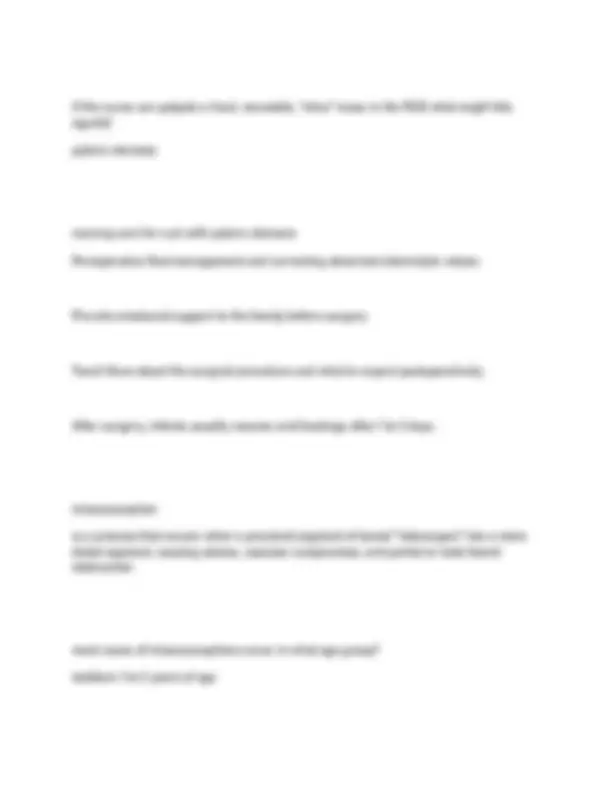

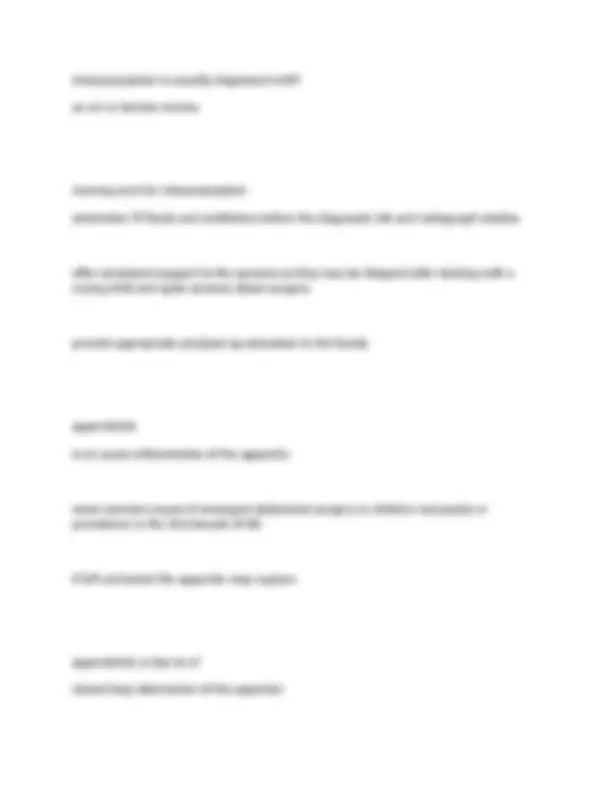
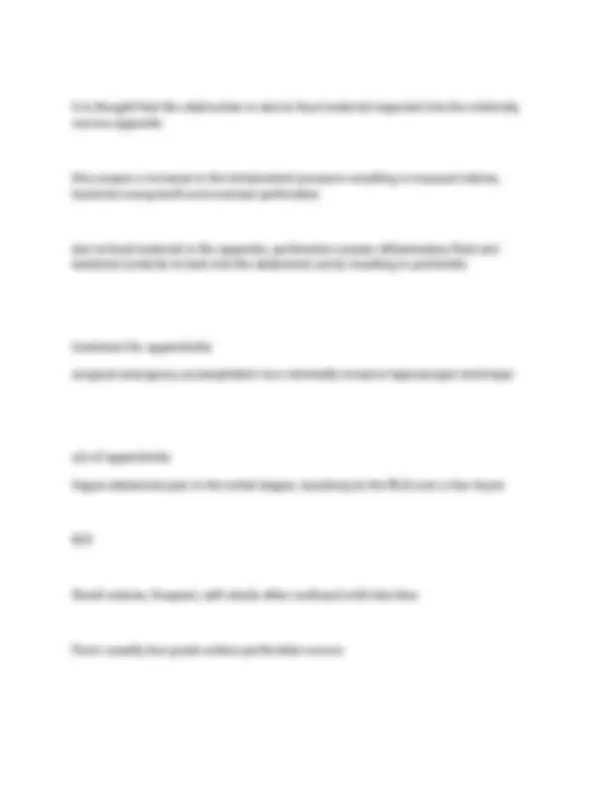
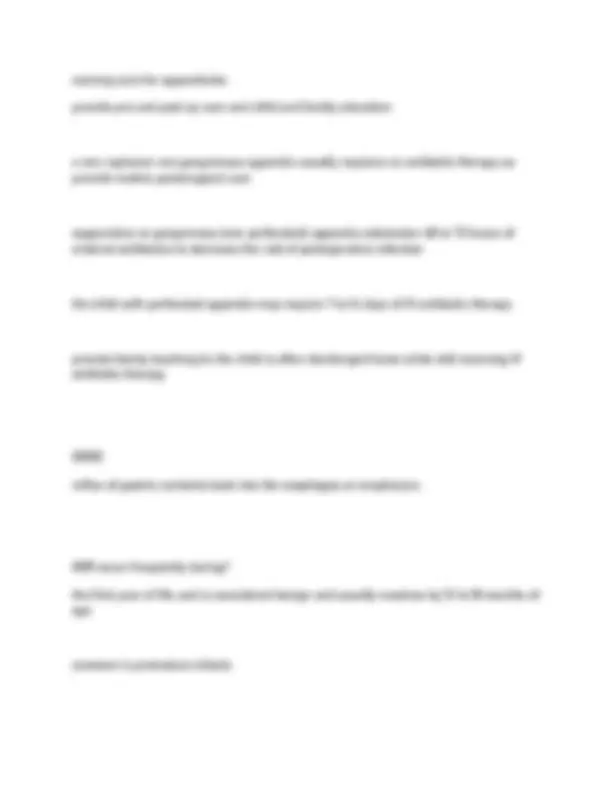

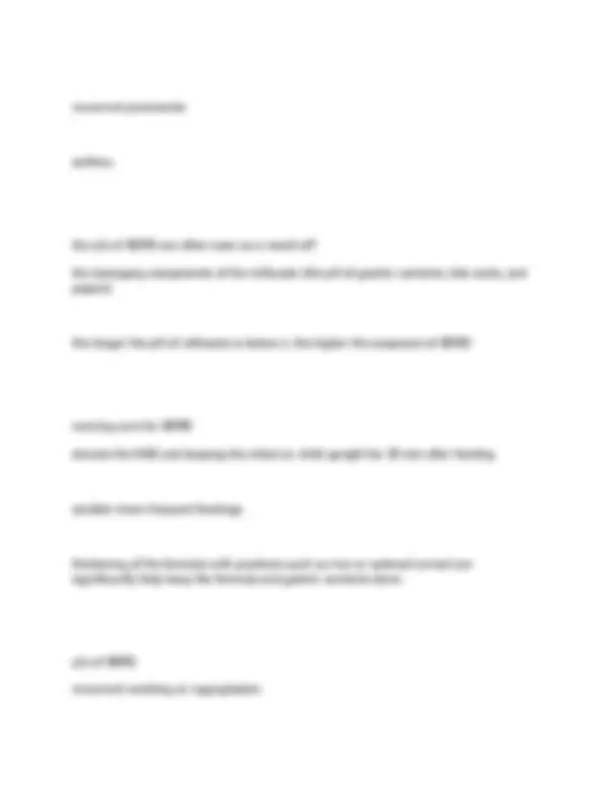

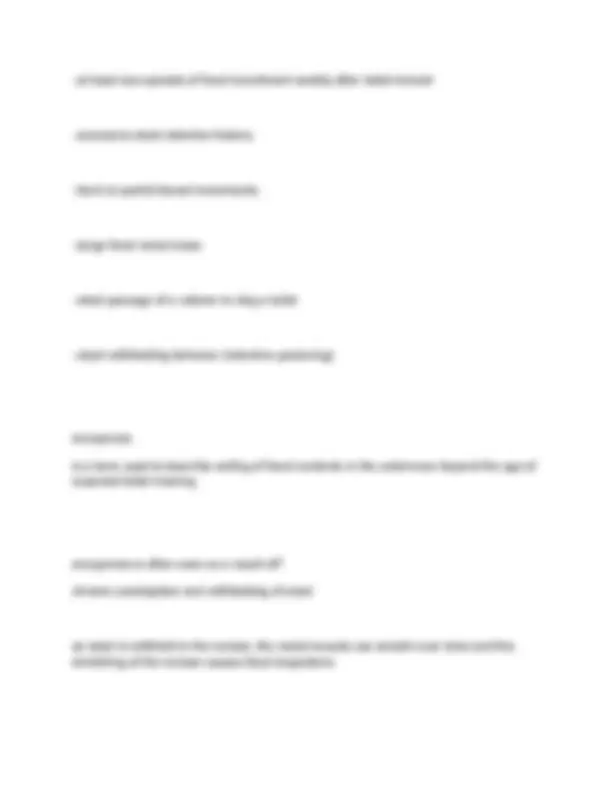

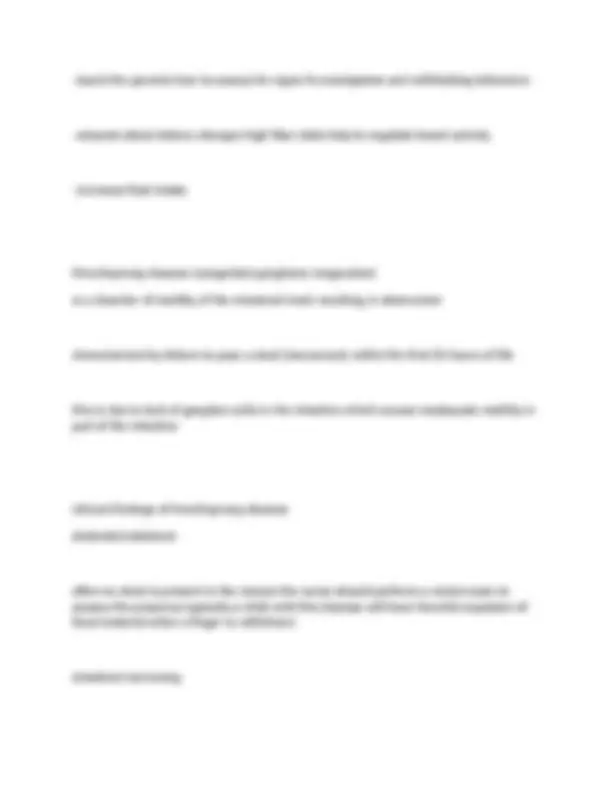
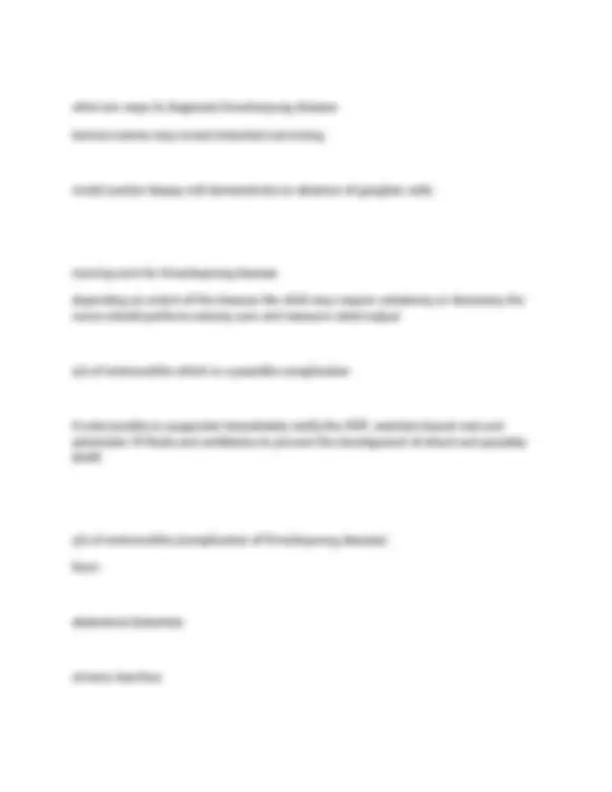
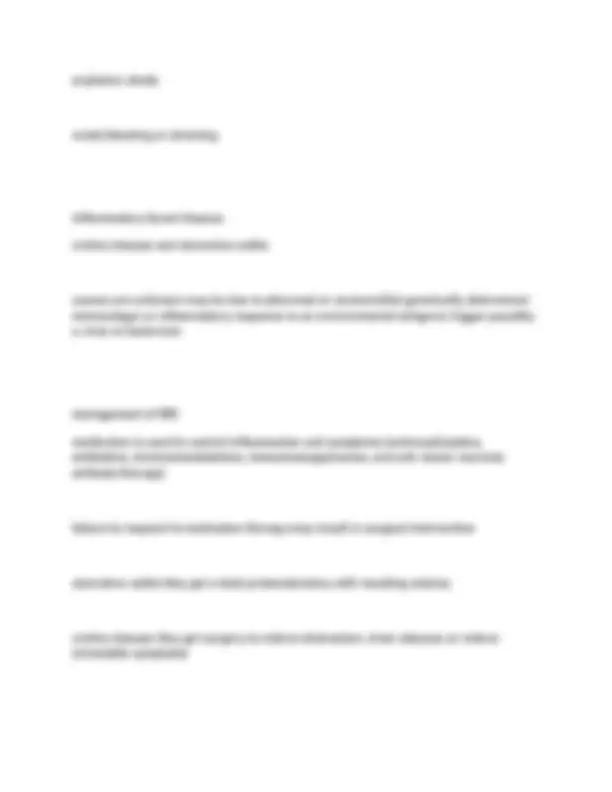






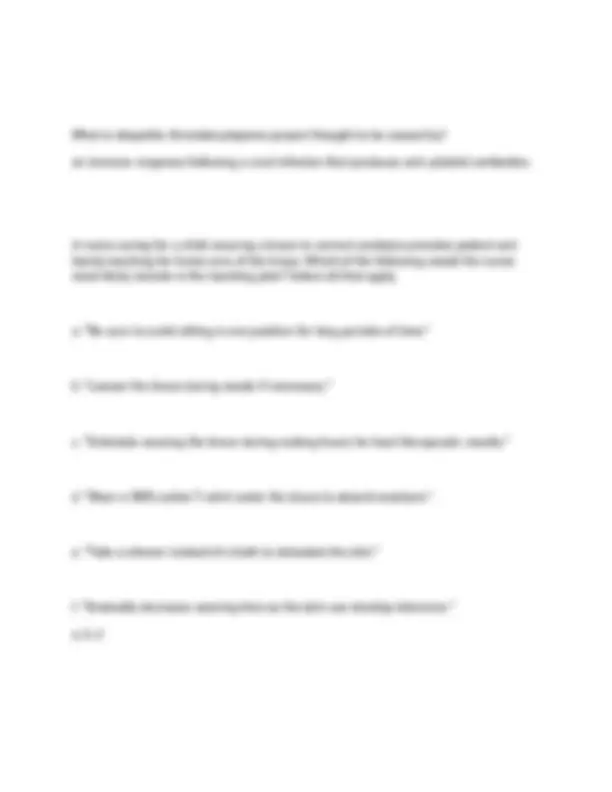
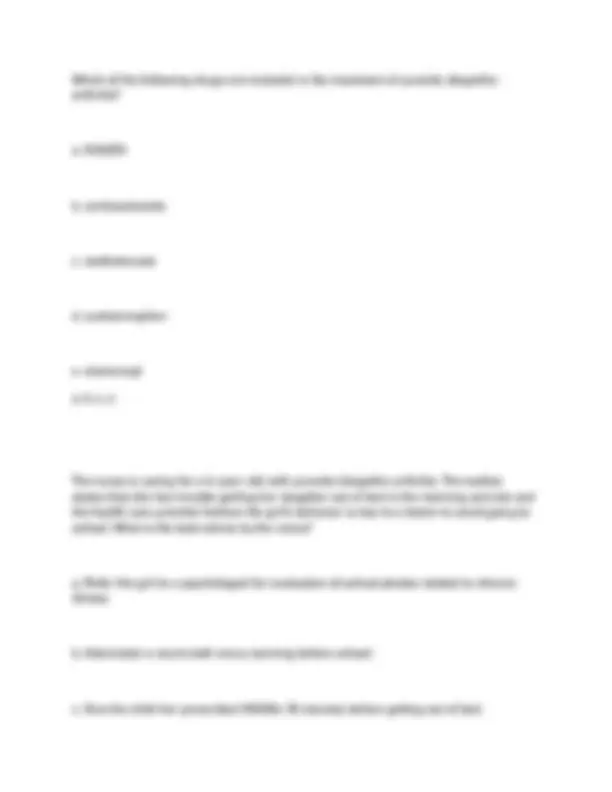

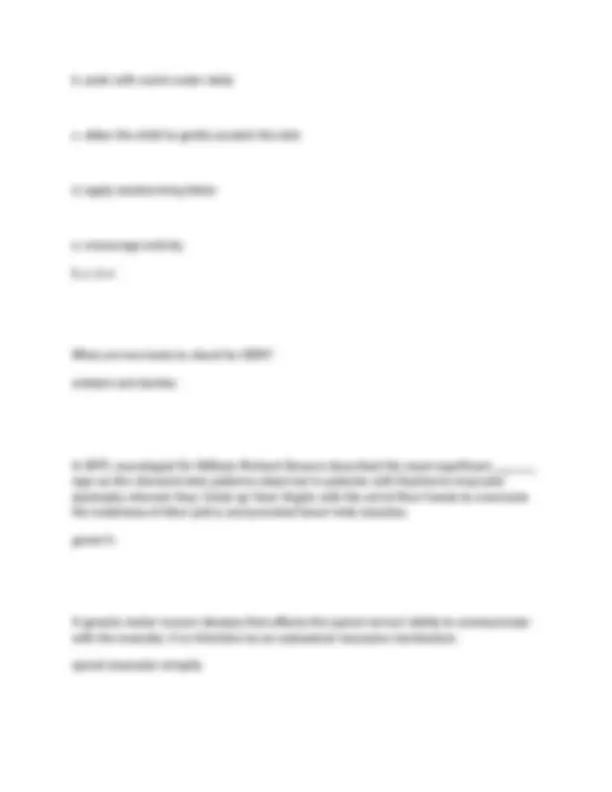

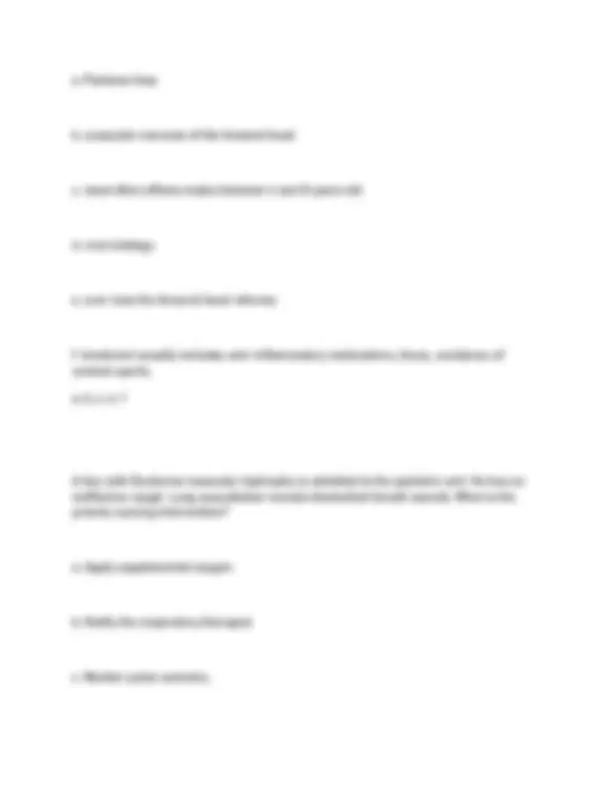
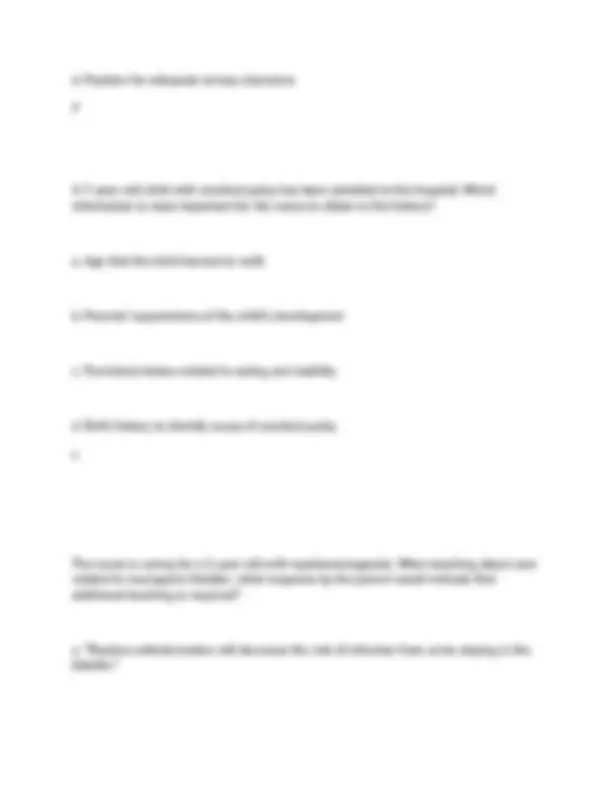
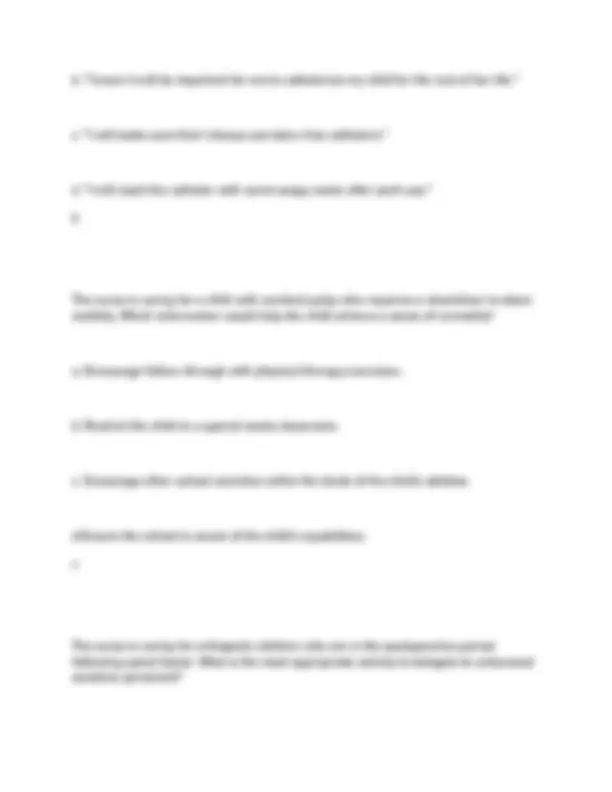

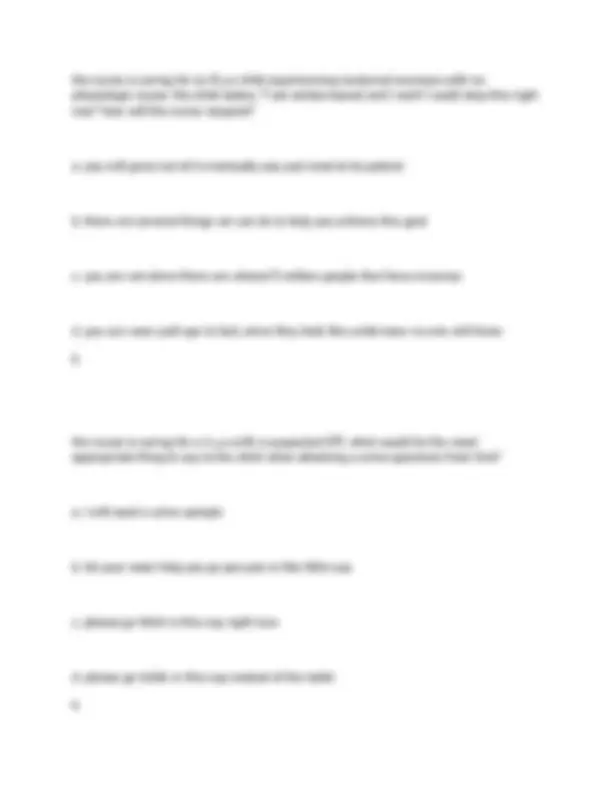
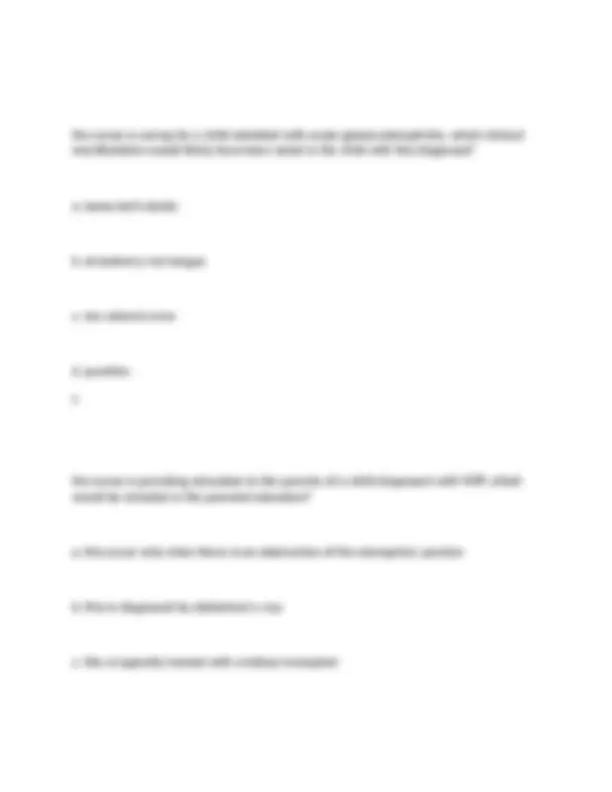



Study with the several resources on Docsity

Earn points by helping other students or get them with a premium plan


Prepare for your exams
Study with the several resources on Docsity

Earn points to download
Earn points by helping other students or get them with a premium plan
Community
Ask the community for help and clear up your study doubts
Discover the best universities in your country according to Docsity users
Free resources
Download our free guides on studying techniques, anxiety management strategies, and thesis advice from Docsity tutors
NURS 6500 Final Exam 2025/2026 Questions with Correct Answers (Original Exam) A+ Graded-Marquette University
Typology: Exams
1 / 88

This page cannot be seen from the preview
Don't miss anything!

















































































The nurse is reinforcing teaching with the caregiver of 5-year-old twins regarding urinary tract infections (UTIs). The caregiver is puzzled about why her daughter has had three urinary tract infections but her son has had none. She reports that their diets and fluid intake is similar. Which statement would be accurate for the nurse to tell this mother? a girls urethra is much shorter and straighter than a boy's so it can be contaminated fairly easily The nurse is collecting data for a child diagnosed with acute glomerulonephritis. What would the nurse likely find in this child's history? the child recently had an ear infection The nurse is caring for the parents of a newborn who has an undescended testicle. Which comment by the parents indicates understanding of the condition? our son's condition may resolve on its own
normally both testes will descend prior to birth. In the event this does not happen the child will be? observed for the first 6 months of life Which goal of therapy would be appropriate for a nurse to establish with a client's family and a client who has a diagnosis of enuresis? the client remains continent throughout the night Which condition is a risk factor for the development of pelvic inflammatory disease (PID)? multiple sexual partners An adolescent girl and her caregiver present at the pediatrician's office. The adolescent reports severe abdominal pain. A diagnosis of pelvic inflammatory disease (PID) is made. The nurse notes in the child's chart that this is the third time she has been treated for PID. The most appropriate action by the nurse would be to: take the child to a private room and interview her regarding her sexual history and partners pelvic inflammatory disease can? cause sterility in the female primarily by causing scarring in the fallopian tubes that prohibits the passage of the fertilized ovum into the uterus
assess usual voiding patterns A pediatric client is scheduled for an intravenous pyelogram (IVP) of the kidney this afternoon. Which of the following situations would require immediate attention by the nurse? the child does not have intravenous access The nurse is conducting a presentation for a group of nurses who work with adolescents. The group discusses dysmenorrhea. Which statement is most accurately related to dysmenorrhea? a contributing factor in dysmenorrhea is the increased secretion of prostaglandins When assessing a child with hydronephrosis, what would the nurse expect to find? Select all that apply. intermittent hematuria abdominal mass The nurse is caring for a child who receives dialysis via an AV fistula. Which finding indicates an immediate need to notify the physician? absence of a thrill
The nurse is caring for a child diagnosed with hydronephrosis. Which manifestation is consistent with complications of the disorder? hypertension A nurse has just admitted a client with symptoms of vulva inflammation, pain, odor, and pruritus. Based on these findings, the nurse could conclude that this client will be diagnosed with which condition? vulvovaginitis The nurse is caring for a child on a pediatric unit who has hemodialysis three times per week due to renal failure. On the days between dialysis treatment, which meal would be acceptable for the child? grilled chicken, apple slices, and flavored water A nurse is conducting a discussion group with parents of children who have genitourinary disorders. As part of the discussion, the nurse reviews the major functions of the kidneys. The nurse determines that the teaching was successful based on which statement by the group? the kidneys help control BP, so our child's blood pressure needs to be checked often
In caring for a child with nephrotic syndrome, which intervention will be included in the child's plan of care? weighing on the same scale each day A symptom often seen in acute glomerulonephritis is edema. The most common site the edema is first noted is in which area of the body? eyes The nurse is caring for a child admitted with acute glomerulonephritis. Which clinical manifestation would likely have been noted in the child with this diagnosis? tea colored urine secondary amenorrhea can be the result of? discontinuing contraceptives, a sign of pregnancy, the result of physical or emotional stress, or a symptom of and underlying medical condition The nurse is caring for an infant boy with grade IV vesicoureteral reflux. Which finding would lead the nurse to suspect that hydronephrosis is present? abdominal mass
The nurse is concerned about the pediatric client's immune system after taking corticosteroids. Which laboratory study is the nurse most correct to assess? leukocyte count The nurse is assessing a hospitalized child diagnosed with nephrotic syndrome. What set of assessments is most important for the nurse to complete to help identify hypoalbuminemia in this child? heart rate and blood pressure clinical manifestations of HIV/AIDs failure to thrive recurrent bacterial infections opportunistic infections chronic or recurrent diarrhea recurrent or persistent fever
folic acid deficiency pernicious anemia anemia may also results from toxin exposure (______ poisoning) or as an adverse reaction to a medication known as? lead poisoning, aplastic anemia anemia caused by the alteration or destruction of the RBCs is termed? hemolytic anemia there are several types of hemolytic anemia which are? sick cell disease and thalassemia iron deficiency anemia occurs when? the body does not have enough iron to produce Hgb
as Hgb levels decrease the oxygen carrying capacity of the blood is decreased, resulting in? weakness and fatigue common s/s of iron deficiency anemia irriratiblity HA dizziness weakness SOB pallor fatigue what are some risk factors iron deficiency anemia cows milk consumption before 12 months
nursing management of a child with iron deficiency promoting safety the child is at risk for changes in neurologic functioning related to decreased oxygen supply to the brain which can lead to fatigue and inability to eat enough walking, sitting, standing may be impaired provide close observation of the anemic child assists the older child with ambulation educate the parents on how to protect the child from injury nursing management for dietary interventions of the child with iron deficiency anemia ensure that iron defieict infants are fed only formula fortified with iron breast fed infants include beginning iron supplementation around the age of 4 or 5 months if a child has to take iron supplements what are some teaching points teach parents to precisely measures the amount of iron to be administered parents should place the liquid behind the teeth as the iron in liquid can stain the teeth
can also cause constipation may need stool softeners increase their child's fluid intake and adequate dietary fiber to avoid constipation aplastic anemia failure of the bone marrow to produce cells is characterized by bone marrow aplasia and pancytopenia (decreased number of all blood cells) causes of aplastic anemia most cases are acquired thought to be an immune mediated response environmental toxins, viruses, myelosuppresive drugs, or radiation complications of aplastic anemia include? severe overwhelming infection hemmorahge death
sickle cell disease is a group of inherited hemoglobinopahties in which the RBCs do not carry the normal adult hemoglobin but instead carry a less effective type sick cell anemia is transmitted via? an autosomal recessive inheritance pattern the recessive genes for sickle cell are passed on from both parents who have the gene for Hgb AS (sick cell trait) complications of sickle cell anemia include vaso-occlusive pain crises stroke sepsis ACS spleen sequestration
reduced visual acuity related to decreased retinal blood flow chronic leg ulcers cholestasis and gallstones delayed growth and development significant anemia may occur when the RBCs sickle. sickling may be triggered by? any stress or traumatic event such as infection, fever, dehydration, physical exertion, excessive cold exposure, or hypoxia if the parents are both carriers for sickle cell anemia what are the chances they will have a child with the disease? 25% if the parents are carriers for sickle cell anemia what are the chances they will have a child who is also a carrier? 50% in sickle cell anemia as the cells sick, the blood becomes more viscous because?
hemophilia is a group of X-linked recessive disorders that result in deficiency in one of the coagulation factors in the blood x-linked are transmitted by carrier mothers to their sons, so usually only males are affected by hemophilia hemophilia is classified according to the severity of the disease ranging from mild to severe. the more severe the disease the more likely? it is that there will be bleeding episodes when bleeding occurs, the vessels constrict and a platelet plug forms, but because of the deficient factor the fibrin will not solidify, and thus bleeding continues the primary goal of managing hemophilia is? to prevent bleeding this is best accomplished by instructing the child to avoid activities with a high potential for injury (football, riding, skateboarding) encourage activity with the least contact (running, swimming)
a pt with hemophilia if bleeding or injury occurs what will be prescribed? factor administration which will return the clotting factors to a normal level for a period of time factor replacement should be given before any surgeries or other procedures that can lead to bleeding such as IM injection and dental care teaching points to prevent bleeding in the child with hemophilia protect the toddler with soft helmets, padding on the knees, carpets in the home, and softened or covered corners children should stay active: swimming, baseball, basketball, and bicycling avoid intense contact sports such as football, wrestling, soccer avoid trampoline use and riding all terrain vehicles RBC function transport oxygen from the lungs to the tissues vertical transmission of HIV refers to perinatal in utero or during birth transmission or via breast milk